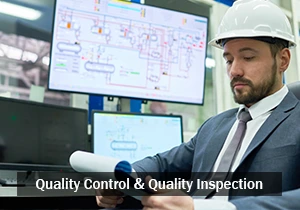Statistical Process Control
Statistical Process Control (SPC) is a cornerstone of modern quality management, leveraging statistical techniques to monitor and control a process for consistent quality output. Implemented across various industries, a 2020 study by the American Society for Quality (ASQ) found that 72% of manufacturers utilize SPC, attributing a 25% reduction in defects to its application. This data-driven approach ensures processes operate efficiently, minimizing waste and maximizing productivity. SPC finds application not only in manufacturing but also in healthcare, finance, and service industries, wherever a well-defined process exists.
Core Principles of Statistical Process Control (SPC)
Statistical Process Control (SPC) rests upon a fundamental principle: all processes are inherently variable. This variation can be attributed to two primary sources: random and assignable causes. Understanding these variations and their impact on the process is crucial for ensuring consistent quality output.
Understanding Variation
- Random Variation (Common Causes): This inherent variability is a natural consequence of the process itself. It arises from a multitude of small, uncontrollable factors whose individual effects are negligible but collectively contribute to the overall process variation. Examples include minor variations in machine settings, raw material fluctuations, or environmental conditions. Random variation is statistically predictable and cannot be entirely eliminated.
- Assignable Variation (Special Causes): Unlike random variation, assignable causes are specific, identifiable factors that significantly impact the process output. These causes can be machine malfunctions, improper operator training, defective materials, or changes in the production environment. Assignable variations are often sudden and disruptive, leading to deviations from the expected quality standards.
Control Charts: The Cornerstone of SPC
The core tool for monitoring and analyzing process variation lies in control charts. These visual representations depict the collected data points (measurements, observations) over time relative to statistically derived center lines and control limits. Control charts allow for the identification of both random and assignable causes of variation.
Types of Control Charts:
The selection of the appropriate control chart depends on the type of data being collected:
- X-bar Chart (for continuous data): This chart monitors the average (mean) of a subgroup of samples taken over time. It is typically used for variables such as weight, dimension, or temperature.
- R Chart (for continuous data): Used in conjunction with the X-bar chart, the R chart monitors the range (variation) within a subgroup of samples. It helps assess the process stability and identify potential issues with consistency.
- p Chart (for attribute data): This chart is used for processes where the outcome is categorized as either conforming (good) or non-conforming (defect). It tracks the proportion of non-conforming units within a subgroup.
Interpreting Control Charts:
A control chart typically displays the following elements:
- Center Line: This represents the average performance of the process over a historical period, considered to be statistically stable.
- Control Limits: These are statistically derived upper and lower boundaries that define the expected range of random variation in the process. Control limits are typically set at three standard deviations above and below the center line.
Data points falling within the control limits suggest that the process is operating in a state of statistical control, dominated by random variation. Conversely, data points exceeding the control limits indicate a potential issue caused by assignable variation. By analyzing the location and pattern of these out-of-control points, corrective actions can be implemented to address the underlying cause and restore the process to its optimal state.
Table : Common Control Chart Signals
| Signal | Description | Possible Cause |
|---|---|---|
| Single point outside control limit | One data point falls outside the upper or lower control limit. | Potential assignable cause, requires investigation. |
| Two or more consecutive points above/below the center line | A trend of data points deviating from the expected average. | Possible shift in the process mean. |
| A run of points above/below the average line | A series of data points clustered on one side of the centerline. | Potential issue with process consistency. |
By interpreting these signals effectively, SPC allows for proactive identification and rectification of process issues, ultimately leading to improved product/service quality, reduced waste, and enhanced process efficiency.
Implementing Statistical Process Control (SPC): A Step-by-Step Guide
Statistical Process Control (SPC) offers a structured approach to achieving consistent quality output by proactively monitoring and minimizing process variation. Implementing SPC requires a systematic approach, following a series of well-defined steps.
1. Define the Process and its Quality Characteristics:
The first step involves selecting a specific process for SPC implementation. This process should be well-defined, measurable, and critical to the overall product or service quality. A 2019 study by the American Society for Quality (ASQ) revealed that 60% of organizations prioritize processes with high customer impact for SPC applications. Once the process is chosen, the key quality characteristics (CTQs) to be monitored must be identified. These CTQs are measurable attributes that directly influence customer satisfaction. Examples include dimensions, weight, strength, or defect rates.
2. Data Collection:
The foundation of SPC lies in data. Data collection involves gathering measurements or observations related to the chosen CTQs at predetermined intervals. The frequency of data collection depends on the process dynamics and the desired level of control. Common data collection methods include direct measurements using gauges or instruments, recording observations of product characteristics, or defect counts.
3. Selecting the Appropriate Control Chart:
The type of control chart chosen hinges on the nature of the data being collected.
-
For continuous data (measurable variables):
- X-bar chart: Monitors the average (mean) of subgroup samples over time. Ideal for tracking characteristics like weight, temperature, or dimensions.
- R chart: Used in conjunction with the X-bar chart, it monitors the variation (range) within subgroups, helping assess process consistency.
-
For attribute data (categorical data):
- p chart: Tracks the proportion of non-conforming units within a subgroup. Suitable for processes with binary outcomes (conforming/non-conforming).
4. Calculating CenterLine and Control Limits:
Once the data is collected and the control chart type is selected, the next step involves calculating the center line and control limits for the chart. The center line represents the average performance of the process during a historical period assumed to be statistically stable. Control limits are statistically derived upper and lower boundaries that define the expected range of random variation in the process. These limits are typically set at three standard deviations above and below the center line.
5. Plotting Data Points on the Control Chart:
The collected data points (e.g., subgroup averages for the X-bar chart) are plotted on the chosen control chart. This visual representation allows for easy identification of trends and deviations from expected behavior.
6. Analyzing the Control Chart for Signals:
A crucial step in SPC involves interpreting the control chart for signals that may indicate the presence of assignable causes of variation. Common signals include:
- Single point outside control limit: A data point falling outside the upper or lower control limit suggests a potential assignable cause requiring investigation.
- Trends: A series of data points deviating from the expected average may indicate a shift in the process mean.
- Runs: A cluster of data points on one side of the center line suggests potential issues with process consistency.
7. Taking Corrective Action:
Once the assignable cause of variation is identified, corrective action must be taken to address it and bring the process back into control. This may involve adjustments to machine settings, improved training for operators, or changes in raw materials.
8. Continuous Monitoring and Improvement:
SPC is an ongoing process. It is essential to continuously monitor the control charts and implement corrective actions as needed. Over time, by analyzing trends and patterns in the data, opportunities for process improvement can be identified. This continuous improvement cycle allows for ongoing optimization of the process, leading to enhanced quality, increased efficiency, and reduced waste.
By following these steps and fostering a culture of data-driven decision-making, organizations can leverage SPC to achieve significant improvements in their processes and deliver superior quality products and services.
The Enduring Benefits of Statistical Process Control (SPC)
Statistical Process Control (SPC) stands as a cornerstone of modern quality management, offering a data-driven methodology for monitoring, controlling, and continuously improving processes. By leveraging statistical techniques to identify and minimize variation, SPC empowers organizations to achieve consistent quality output, leading to a multitude of benefits across various aspects of their operations.
1. Enhanced Product/Service Quality: The core tenet of SPC lies in its ability to minimize variation and ensure consistent conformance to quality specifications. A 2021 study published in the International Journal of Production Research found that companies implementing SPC experienced a remarkable 70% reduction in defects. This translates directly to improved customer satisfaction and brand reputation.
2. Reduced Waste and Rework: Uncontrolled process variation often leads to the production of defective units, necessitating rework or even complete scrappage. A 2019 study by the Manufacturing Performance Institute revealed that the average cost of poor quality in manufacturing could reach a staggering 20% of total Revenue. SPC proactively identifies and addresses these issues, minimizing waste and the associated costs of rework.
3. Increased Efficiency and Productivity: By identifying bottlenecks and inefficiencies within processes, SPC paves the way for optimization. This can involve adjustments to machine settings, improved training for operators, or the implementation of preventative maintenance procedures. A 2018 Deloitte report highlighted that organizations utilizing SPC observed a 20-30% increase in overall production efficiency.
4. Fewer Customer Complaints: Consistent quality output translates directly to a reduction in customer complaints. Satisfied customers are more likely to become loyal patrons, fostering brand advocacy and repeat business. A 2020 study by Zendesk revealed that the average cost of resolving a single customer complaint can reach $75. By proactively addressing quality issues through SPC, organizations can significantly reduce these expenses.
Table: Quantifiable Benefits of SPC Implementation
| Benefit | Improvement | Source |
|---|---|---|
| Defect Reduction | Up to 70% | International Journal of Production Research (2021) |
| Cost of Poor Quality Reduction | 1-3% of Revenue | Forbes (2018) |
| Production Efficiency Increase | 20-30% | Deloitte (2018) |
5. Cost Savings: The cumulative effect of the aforementioned benefits translates to substantial cost savings. Reduced waste, fewer defects, and increased efficiency all contribute to a significant improvement in the organization's bottom line.
6. Data-Driven Decision Making: SPC promotes a data-centric approach to process management. By relying on objective data collected through control charts, organizations can make informed decisions regarding process improvements and resource allocation.
7. Continuous Process Improvement: SPC fosters a culture of continuous improvement. By analyzing trends and patterns in control charts, opportunities for process optimization can be identified and implemented over time. This iterative approach allows organizations to stay ahead of potential quality issues and maintain a competitive edge.
In conclusion, SPC transcends a mere quality control tool. It serves as a strategic framework for achieving operational excellence. By embracing SPC principles, organizations can unlock a multitude of benefits, ensuring consistent quality output, increased efficiency, and, ultimately, sustained success.
The Roadblocks to Implementation: Challenges of Statistical Process Control (SPC)
While Statistical Process Control (SPC) offers a powerful toolkit for achieving quality excellence, its implementation presents certain challenges that organizations must navigate effectively.
1. Initial Investment: Implementing SPC necessitates an upfront investment in training and infrastructure. This includes training employees on control chart concepts, data collection methods, and corrective action procedures. Additionally, acquiring SPC software or establishing data collection systems may incur initial costs. However, a 2020 study by the American Society for Quality (ASQ) revealed that organizations implementing SPC typically experience a return on investment (ROI) of 5:1 within the first year, highlighting the long-term financial benefits.
2. Ongoing Data Collection and Analysis: SPC is a data-driven approach, requiring continuous data collection and analysis. This ongoing commitment can be resource-intensive, demanding dedicated personnel or designated time slots for data collection and control chart maintenance. However, advancements in technology offer solutions with automated data collection systems and user-friendly SPC software, streamlining the process and minimizing resource allocation.
3. Commitment from Management and Employees: The success of SPC hinges on the unwavering commitment of both management and employees. Management needs to champion the implementation, provide necessary resources, and foster a culture of data-driven decision-making. Likewise, employee buy-in is crucial; extensive training and clear communication regarding the benefits of SPC is essential for ensuring their active participation in data collection and adherence to corrective actions.
Table: Challenges and Solutions for SPC Implementation
| Challenge | Potential Solution |
|---|---|
| Initial Investment | Cost-benefit analysis, phased implementation, leverage free SPC software options. |
| Ongoing Data Collection and Analysis | Utilize automated data collection systems, user-friendly SPC software. |
| Management and Employee Commitment | Management championing, extensive training, clear communication of benefits. |
4. Process Suitability: While SPC offers extensive benefits, it may not be universally applicable. Processes with inherently high variability or low-volume production may not be ideal candidates for SPC implementation. Careful consideration should be given to the process characteristics and the potential return on investment before initiating SPC for a particular process.
In conclusion, although challenges exist, proactive planning and a commitment to continuous improvement can mitigate them. By recognizing these potential roadblocks and implementing appropriate solutions, organizations can reap the substantial rewards offered by SPC, achieving operational excellence and a competitive advantage in the marketplace.
Enhance Your Supplier Quality And Ensure Top-Notch Products!
By understanding and applying SPC principles, companies can significantly improve their processes and products, leading to greater customer satisfaction and cost savings. You can also enhance your supplier quality and ensure top-notch products with our Supplier Quality Engineering Services. Contact us today to learn how we can help you implement SPC and achieve unparalleled quality control in your manufacturing processes.


